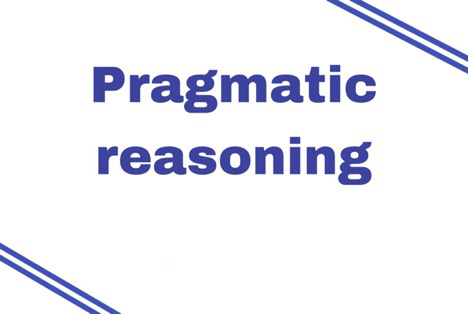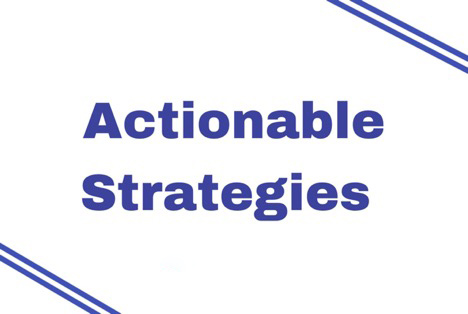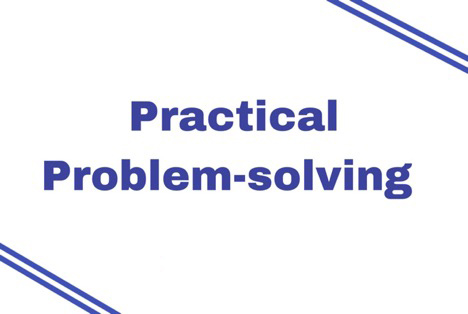The expression “on the ground thinking” refers to a realistic and practical approach rather than idealistic or theoretical notions toward solving or handling a situation or circumstance.
In other words, “on the ground thinking” simply implies that you are practical with your approach and not just imaginative or idealistic when proffering a solution or addressing a problem.
The phrase “on the ground thinking” explains a thought pattern that is not idealistic or surreal, but very pragmatic, realistic, and effective. An idea that applies to real-life problems and can produce outstanding results.
It is essential to know that the primary purpose of thinking is to solve the numerous problems associated with humanity.
Our brain should not only be used for imaginative and idealistic thoughts but more importantly, to proffer solutions to the several problems in our world to make life easy.
“On the ground thinking” implies engaging in practical thinking to produce practical results. Hence, I will be sharing 15 other ways to say “on the ground thinking”, with some examples to help improve your understanding of the expression.
Here are 15 other ways to say on-the-ground thinking
1. Pragmatic reasoning

“Pragmatic reasoning” directly refers to practical and effective thinking channeled towards problem-solving.
It is the ability to think effectively towards proffering a solution to solve a problem or create a solution. “Pragmatic reasoning” is aimed at problem-solving.
Take a look at these examples:
- The team’s pragmatic reasoning has aided the growth and development of this organization beyond reasonable doubt.
- The organizer’s lack of pragmatic reasoning is a significant flaw that is easily noticeable in the event.
- Her pragmatic reasoning led her to choose a career path that offered stability and steady growth.
2. Applied thinking
“Applied thinking” is not merely idealistic or theoretic, it is creative and critical thinking aimed towards innovative ideas for lasting impact on real-world problems.
When thoughts are used towards solving problems, it is applied thinking. “Applied thinking” is synonymous with “on the ground thinking”.
Here are some examples:
- Applied thinking has proven effective in improving the nation’s economy.
- Through applied thinking, the leaders came up with new strategies to tackle the situation.
- The company’s success can be attributed to its leader’s applied thinking, which guided them in making strategic choices.
3. Action-oriented thought
“Action-oriented thoughts” are practicable and applicable ideas or strategies geared towards solving real-life problems or challenges.
“Action-oriented thoughts” are goal-oriented; they aim to confront challenges, solve tangible problems, and achieve a specific outcome or goal.
“Action-oriented thought” can be used to substitute “on the ground thinking”.
Check out these examples:
- He was appraised for consistently contributing action-oriented ideas toward the advancement of this organization.
- If only her ideas were action-oriented, she would have had more achievements instead of more excuses.
- With an action-oriented thought process, he skillfully turned ideas into concrete plans and executed them efficiently.
4. Results-driven reasoning
“Results-driven reasoning” is a mindset or a mental disposition that is result-oriented. It is a mental perception and approach that is particular about solving real-world problems rather than an idealistic or surreal approach.
“Results-driven reasoning” is synonymous with “on the ground thinking”.
Take a look at these examples:
- Having a team with results-driven reasoning is a necessary factor for the advancement and development of any organization.
- People with results-driven reasoning often produce lasting results in any business they venture into.
- Successful entrepreneurs often possess results-driven reasoning, allowing them to seize opportunities and navigate obstacles.
5. Utilizing Practicality
“Utilizing practicality” suggests implementing a practical or realistic approach toward confronting challenges for increased productivity and lasting impact.
“Utilized practicality” is a phrase that can be used to substitute “on the ground thinking”
Here are some examples:
- Utilizing practicality with your approach is a great way to improve productivity in your business.
- Utilizing practicality is a key factor for success and productivity in your industry.
- Leaders who prioritize utilizing practicality often make decisions that lead to sustainable and achievable outcomes.
6. Actionable Strategies

“Actionable Strategies” involve tackling or handling issues with practical and results-driven methods and procedures to improve outcomes and achieve an intended goal.
These kinds of strategies are realistic and practical towards providing a solution to the problem at hand.
“Actionable strategies” is a phrase that can be used in place of “on the ground thinking”.
Check out these examples:
- We need actionable strategies to help us out of this dilemma otherwise, we may pack up soon.
- When acted upon, actionable strategies often produce exceptional outcomes.
- Developing actionable strategies has been crucial in overcoming obstacles and ensuring a more stable future in our organization.
7. Effective Problem-solving
“Effective problem-solving” is a skill that approaches a challenge with practical ideas and strategies aimed at eradicating any obstacles and providing long-lasting results.
“Effective problem-solving” is a phrase that can be a substitute for “on the ground thinking”
Here are some examples:
- Her effective problem-solving skills have impacted and immensely contributed to the development of this great institution in so many ways.
- Possessing effective problem-solving skills is crucial in problem management.
- In the kitchen he approached cooking with effective problem-solving, improvising when he realized he was missing an ingredient and still creating a delicious meal.
8. Functional Thought Process
A “functional thought process” suggests a way of thinking that is practical in its approach.
It is primarily geared towards solving real-life problems and providing long-lasting solutions, as opposed to mere idealistic and unrealistic thinking.
“Functional thought process: is synonymous with “on the ground thinking”.
Here are some examples:
- Approaching challenges with a functional thought process often guarantees a positive outcome in your work.
- She excelled in her career because of her functional thought process which enabled her to confront challenges and achieve tremendous progress.
- With a functional thought process, she organized her vacation, booking flights and creating an itinerary of places to visit.
9. Results-driven Approach
A “Results-driven approach” implies a method or strategy that is focused solely on improving your performance and productivity in your business or work.
It is an approach that is aimed at stimulating favorable outcomes and positive impacts. “Results-driven approach” is synonymous with “on the ground thinking”.
Take a look at these examples:
- Our results-driven approach to tackling the climate crisis has helped us to address our climate challenges and improve the environment by reducing emissions from fossils.
- His results-driven approach has helped to develop a better sense of what the world needs and how to make the world safer and better for everyone.
- With a results-driven approach, our sales team set clear targets and constantly analyzed their performance to optimize sales strategies.
10. Real-world Application
“Real-world application” refers to a systematic approach to confronting practical challenges with tangible implications.
“Real-world applications” are realistic and pragmatic, and provide real-life solutions in real-life situations.
“Real-world application” is a phrase that can be used in place of “on the ground thinking”.
Here are a few examples:
- The understanding that real-life situations require real-world applications enabled her to think outside the box and come up with a practical solution.
- The development of new drugs, new laboratory equipment, and medical care is a real-world application of scientific research.
- Marketers employ real-world applications of digital marketing strategies to reach target audiences through social media, SEO, and online advertising.
11. Solution-centric thinking
“Solution-centric thinking” is a phrase that implies a way of thinking that is centered or focused on providing solutions to real-world problems.
It is practical in its approach and aims at solving problems. is a phrase that can be used in place of “on the ground thinking”.
Here are some examples:
- The team’s solution-centric thinking enabled them to collaborate and develop a better strategy to achieve their collective objectives.
- Utilizing solution-centric thinking, he approached setbacks as opportunities to improve and innovate new ideas.
- Our company’s success in customer service is driven by a solution-centric thinking approach, prioritizing customer satisfaction through prompt issue resolution
12. Practical Problem-solving

“Practical problem-solving” refers to a systematic approach towards challenges that is beneficial and applicable in solving problems.
It aims at proffering tangible solutions for real-world problems. “Practical problem-solving” is a phrase that can be used in place of “on the ground thinking”.
Check out these examples:
- She demonstrated practical problem-solving skills by breaking down complex issues into manageable steps for easy application and execution.
- The success of the project was attributed to the team’s commitment to practical problem-solving, which ensured progress despite the numerous challenges encountered.
- Practical problem-solving skills are cultivated in students to make them ready for real-world challenges and enable them to adapt to various situations.
13. Tangible Strategies
“Tangible strategies” are applicable, relevant, and practical techniques geared towards the unraveling of difficult situations and the creation of adequate solutions.
“Tangible strategies” are realistic and practical approaches aimed at producing beneficial results.
“Tangible strategies” is an expression that can be substituted for “on the ground thinking”.
Check out these examples:
- The company’s growth was driven by adopting and implementing tangible strategies that improved customer satisfaction.
- The teacher employed tangible strategies like hands-on experiments and interactive activities to make learning science engaging and exciting for her students.
- To achieve their financial goals, the couple developed tangible strategies that involved budgeting, saving, and investing in high-yield assets.
14. Real-world Mindset
A “real-world mindset” refers to a mentality or thought pattern that approaches situations with the intent to understand and solve difficulties in offering sensible solutions.
“Real-world mindset” is an expression that could be substituted for “on the ground thinking”.
Here are some examples:
- In the University, students are supposed to possess a real-world mindset so that they can apply what they have learned in real-life situations.
- With a real-world mindset, she approached the project by considering practical applications and potential challenges.
- Successful entrepreneurs possess a real-world mindset, allowing them to adapt to market changes and seize opportunities as they arise.
15. Tangible Solution Approach
A “tangible solution approach” refers to a strategy or a technique that is realistic and practical in its method of solving real-life problems.
It is solution-oriented; hence it focuses on solving problems.
Check out these examples:
- The workshop emphasized a tangible solution approach by teaching participants how to apply practical and simple steps to overcome challenges.
- Her leadership style revolves around a tangible solution approach, emphasizing measurable outcomes and achievements.
- A tangible solution approach to personal finance involves setting clear financial goals and budgeting to achieve them.
Conclusion
To sum it up, “on-the-ground thinking” can be described in various ways, and you can even create your phrases. But the main point is that it’s all about practical, real-world problem-solving that gets actual results.
When we look at synonyms or similar phrases, we see that the real power lies in picking the right word or phrase for the situation. Not every word fits everywhere.
So, knowing which word to use in which context is super important when we’re talking or writing.
In this journey of exploring words, we find that words aren’t just tools for communication; they’re like paints on an artist’s palette, helping us paint a vivid picture of our thoughts and ideas.
So, whether we choose “practicality,” “realism,” or “results-driven thinking,” it’s all about using words effectively to convey the idea of “on-the-ground thinking.”
This helps us communicate better and understand each other more clearly.